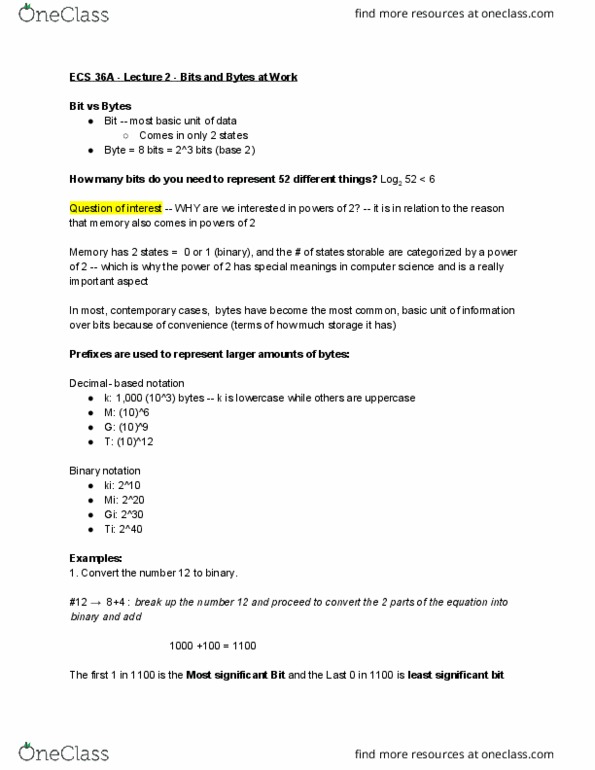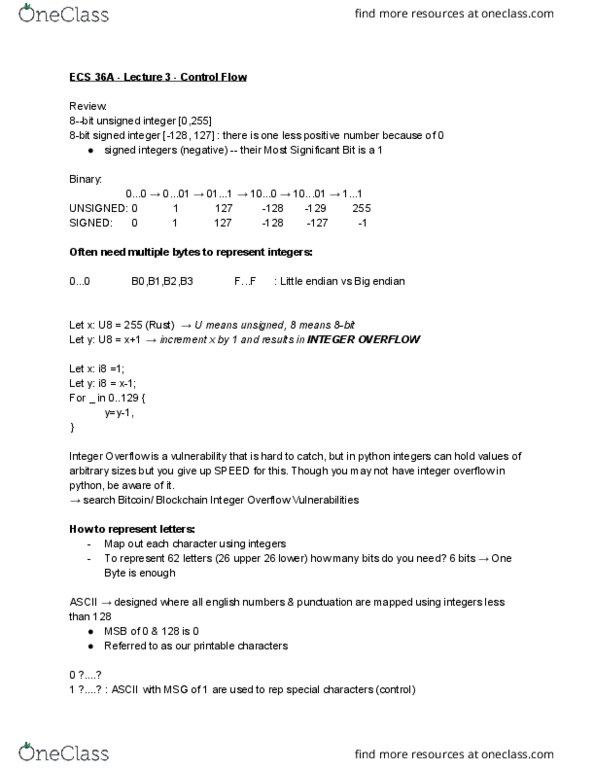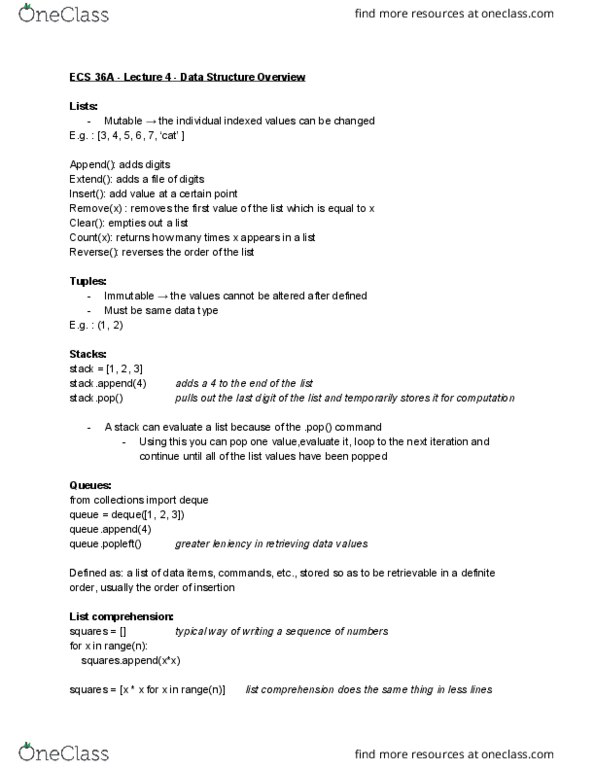ECS 36A Lecture Notes - Lecture 3: Lookup Table, Iterator, Unicode
ECS 36A verified notes
3/21View all
Document Summary
Ecs 36a - lecture 3 - control flow. 8-bit signed integer [-128, 127] : there is one less positive number because of 0. Signed integers (negative) -- their most significant bit is a 1. 00 b0,b1,b2,b3 ff : little endian vs big endian. Let x: u8 = 255 (rust) u means unsigned, 8 means 8-bit. Let y: u8 = x+1 increment x by 1 and results in integer overflow. Integer overflow is a vulnerability that is hard to catch, but in python integers can hold values of arbitrary sizes but you give up speed for this. Though you may not have integer overflow in python, be aware of it. Ascii designed where all english numbers & punctuation are mapped using integers less than 128. Msb of 0 & 128 is 0. : ascii with msg of 1 are used to rep special characters (control) What"s wrong with this? limits the standard to only english unable to program in other languages.




